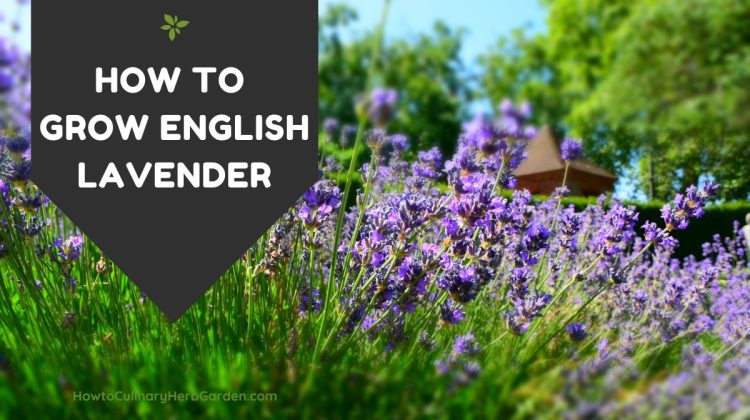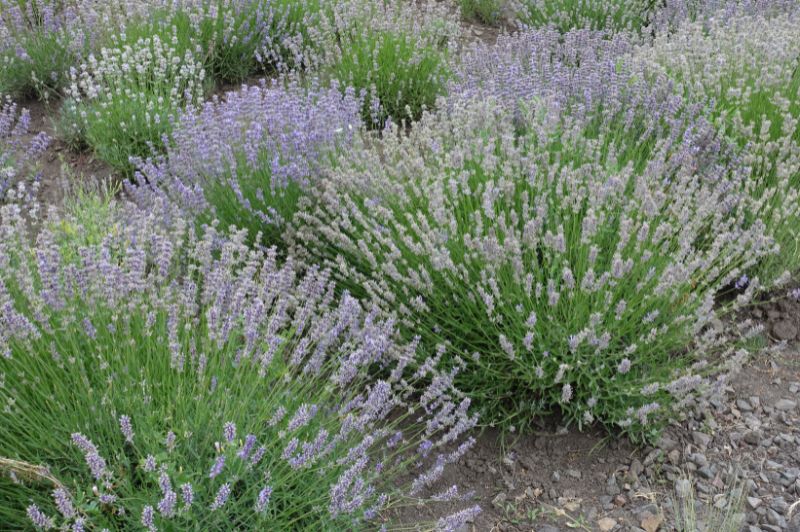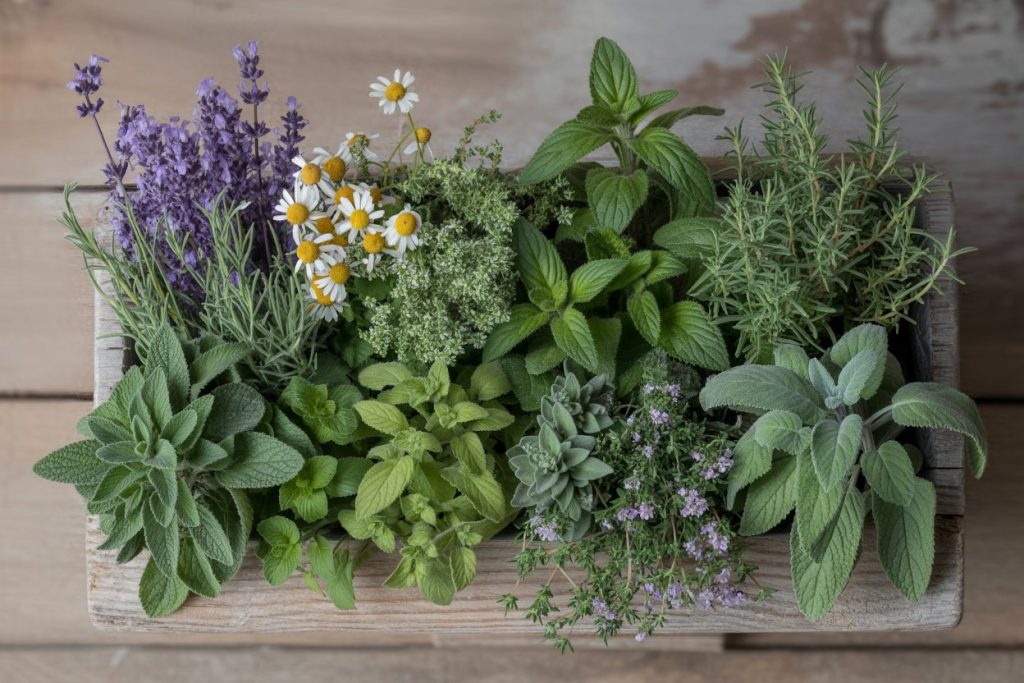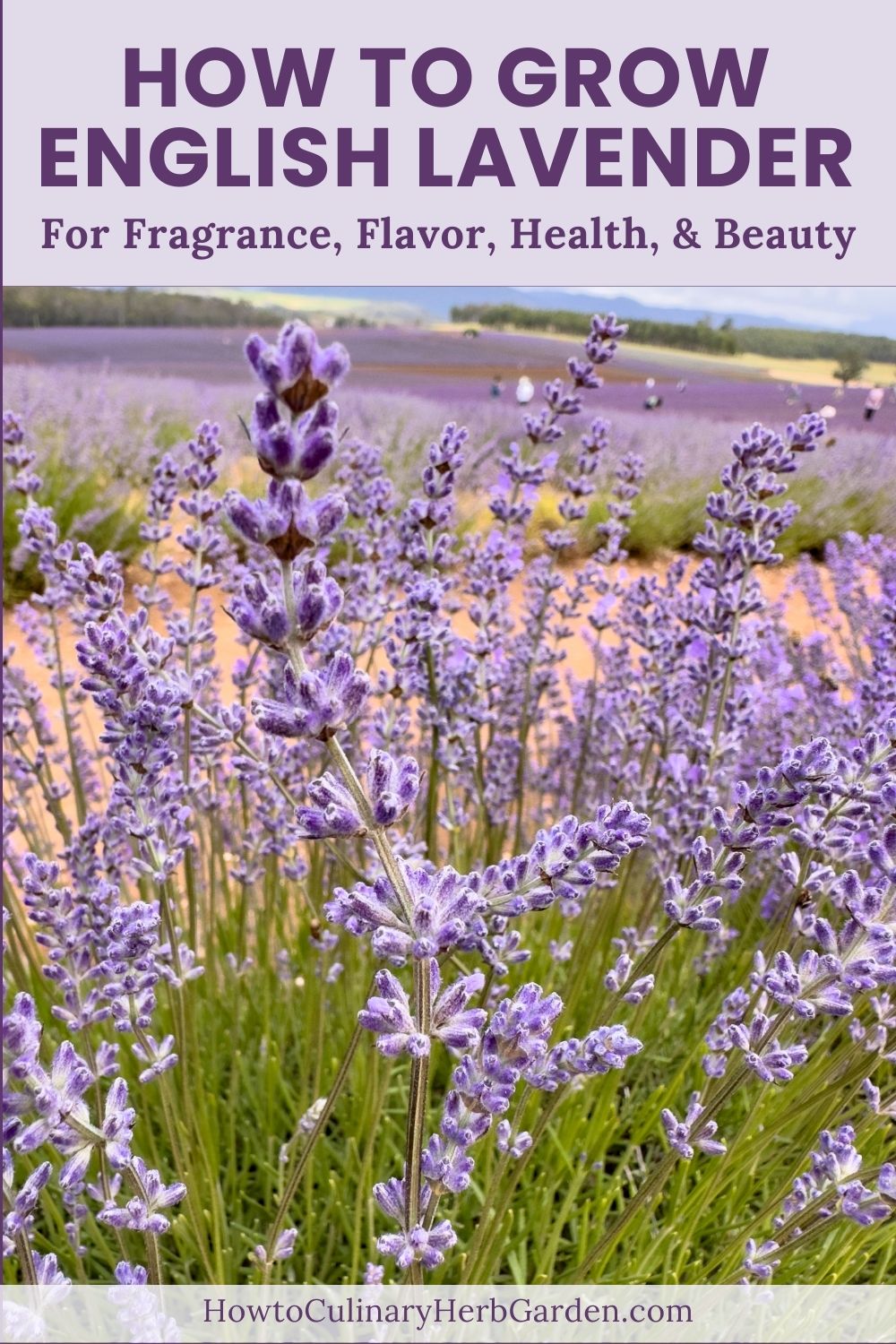
Lavandula angustifolia
Lavender is a beautiful and versatile perennial herb. Its small leaves and softly colored blossoms have a rich fragrance and delicate flavor. Lavender is grown as an ornamental, culinary, and medicinal herb. A lavender bush can keep growing and blooming for up to fifteen years.
English vs. French Lavender
So-called “English lavender” did not originate in England, but it’s one of the few types of lavender that will thrive in the English climate. There are many other types of lavender. French lavender is probably the best known.
English lavender, Lavandula angustifolia, is shorter than French lavender, Lavandula dentata. It is also hardier than most French lavenders, overwintering outdoors as far north as Zone 4 or 5.
French lavender has longer stems and a longer bloom time, producing larger quantities of essential oil. English lavender is more fragrant, and its oil is of higher quality.
English lavender is most commonly recommended for cooking, although some writers prefer a specific cultivar of French lavender. For more information, see our article on culinary lavender.
Growing English Lavender Plants in the Garden

Lavender prefers very well-drained soil. Light sandy or gravelly soil works well. Planting lavender in moist heavy soil may encourage root rot. Lavender also likes alkaline or limey soil. The Herb Society of North America recommends adding crushed oyster shell or turkey grit to the planting hole to improve drainage.
Set your lavender plants in full sun in a south-facing location. They don’t care for high humidity, so set them where they’ll get good air circulation. Extension articles say not to use organic mulch around them—though stone mulch may suit them just fine. (But I mulch my lavender plants with a mix of sawdust, rabbit manure, and hay in fall, and it seems to do no harm.)
English lavender can grow up to 3 feet high, but 18” is a more common height. This depends somewhat on the variety you select, and also on your growing conditions. It can spread to 2 feet across. Give it space to grow uncrowded.
Some varieties of lavender are winter-hardy as far north as Zone 4. Gardeners in the coldest climates will need to grow lavender in indoor containers to keep it thriving through the winter. Check with your local Cooperative Extension or local herb gardeners about varieties suited to your area.
Propagation and Timing
It’s not easy to start lavender from seed; most gardeners start with established plants. But once your lavender plant is established, you can easily take cuttings or root divisions to start new plants.
There are several methods to start new lavender plants from cuttings.
- In her Complete Book of Herbs and Spices, Sarah Garland recommends taking small new shoots in spring or long woody non-flowering shoots in fall for cuttings. She says to root these in potting compost.
- The Herb Society recommends making cuttings in late spring or early summer and rooting these in a sterile mix with plenty of perlite.
- The Colorado Extension recommends taking cuttings from flowerless stems just after plants bloom.
My mother propagates her lavender either by digging it up and dividing the roots in early spring or by layering in late spring. To layer, score a notch or slit in the underside of a long stem, at least 6 inches from the growing tip. Prop the cut open with a pebble. Bury the scored part of the stem in soil and keep it moist. Roots should form in about 8 weeks.
Lavender may be transplanted in spring or fall.
Growing English Lavender in Pots
English lavender grows well in containers, either indoors or outdoors. Here are a few tips for success when growing lavender in containers.
- Add extra perlite to your potting/growing medium to ensure it drains well.
- Mix in a small amount of slow-release fertilizer.
- Place containers in full sun outside, or in a south-facing window inside.
- Change the soil every year.
Companion Planting with English Lavender

Lavender is an excellent companion plant. Its flowers attract bees and other pollinators and are a good source of nectar. It is also said to repel codling moths and whiteflies, which might otherwise damage fruit trees or garden plants.
Lavender is a good companion for herbs, including basil, chamomile, lemon balm, marjoram, oregano, sage, and thyme. It also pairs well with vegetable garden crops, including brassicas, lettuce, onions, squash, and tomatoes. And it makes a good companion for fruit trees.
Just remember to give your lavender plenty of space and light. Avoid crowding it up against plants that will shade it or keep it wet.
Maintaining Your English Lavender Plant
Your lavender will grow best if you don’t leave dead flower heads on the plant. Try to harvest and use all the flower heads promptly. If not (I always fall behind), cut them off anyway when they become gray and dry.
English lavender plants can become woody and straggling over time. Some sites suggest pruning them. My mother, who manages our family’s lavender bushes, says firmly that no pruning beyond flower removal is needed or desirable; instead, she divides or layers and eventually replaces plants as they grow. This seems to work fairly well for her.
The University of Arkansas recommends pruning lavender plants back to 8-inch stubs every third year. You can also remove 1/3 of the top growth each year. They agree that this should be done in early spring, just as the first green leaves emerge on the plant. The Herb Society recommends pruning out some of the older stems on woody plants.
Mature English lavender is drought-tolerant. Established plants only need watering once every 2-3 weeks. But when they are budding and blooming, they will benefit from being watered once or twice a week.
Rosemary Gladstar writes in “Medicinal Herbs: A Beginner’s Guide” that an occasional soak, followed by letting it dry out, is better for lavender than frequent watering that keeps it constantly moist. New plants and cuttings need more frequent watering while they establish their roots.
English lavender requires little or no fertilizer.
Several books and articles suggest that lavender may need to be protected with mulch or row cover over the winter in cold climates. I garden in zone 5, and sometimes we have sub-zero winter temperatures. I put some sawdust and rabbit manure around the roots in the fall, but I don’t cover the crowns. My plants haven’t winter-killed. The University of Colorado suggests watering in winter. Here in the snowy Northeast, I’ve never had to do that.
Common Problems With English Lavender

Lavender is susceptible to soil-borne diseases, including Phytophthora blight. Waterlogged soil greatly increases the danger. Plant your lavender in well-drained soil and don’t overwater it.
The University of Colorado says that grasshopper infestations may reduce yields, and that deer may browse or trample plants. There are plenty of deer in my yard, but they haven’t bothered the lavender yet. I have had trouble with plant bugs sucking the juice from the leaves of the plants. A spray of organic pyrethrum dealt with this. I sprayed at dusk to avoid endangering pollinators.
Summary
Lavender offers many benefits to the gardener and is relatively easy to care for. Try some in your garden and see which uses you enjoy most.

